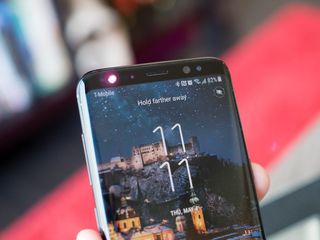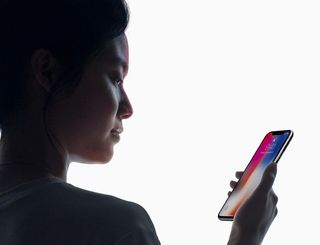Take it from a Note 8 user: Temper your iPhone X Face ID expectations

Alongside the predictably named and designed iPhone 8, Apple just announced the all-new iPhone X (pronounced "ten" by the way). With its very familiar "lots of screen and tiny bezels" design, the iPhone X ditched one of the most recognizable parts of an iPhone: its home button. And in doing so, it lost Touch ID — one of the key features of the iPhone and a real driver for the rest of the industry to get up to speed with fantastic, fast one-touch fingerprint sensors.
It's replaced with what Apple calls "Face ID" instead. A complex set of purpose-built hardware and software that identifies hundreds of tiny details of your face in order to securely unlock your phone when you're looking at it. It sounds wonderful. It even works in demos (well, mostly). But take it from me, as a Galaxy Note 8 user living with iris and face recognition every day: temper your expectations.

Apple, of course, isn't the first to do away with a front-mounted fingerprint sensor in favor of other authentication methods. Many companies have done face and iris unlocking. Google unveiled a rudimentary face unlock as far back as Android 4.0. Samsung has popularized it with the Note 7, Galaxy S8 and now Note 8. While it works pretty well, months and months of people using these phones with these alternate authentication methods has given us lots of information on how it works in the real world. Here's a glimpse into the daily life of using Samsung phones:
"Look here to use irises"
"Hold phone closer"
"Phone too close to face"
"Hold farther away"
Be an expert in 5 minutes
Get the latest news from Android Central, your trusted companion in the world of Android
"Irises not recognized"
And in the end, I wiggle my finger up to the fingerprint sensor on the back or just swipe on the screen and use my pattern instead.
Switching to Face Recognition, which can't operate at the same time as Iris Scanning, improves unlocking performance but is, by admission, not as secure. (Apple claims its Face ID can't be fooled by a photo — we'll see about that.) And in the end, it still isn't as fast as using a one-touch fingerprint sensor — even the awkwardly placed ones on the back of modern Samsung phones.

Now Face ID, as demoed today at the Apple launch event, seems to go one important step beyond Samsung's implementation. The designated phone hardware isn't looking at just your face or just your irises, but instead the entire profile of your face and eyes for authentication. That means the iPhone X can identify your "face" even if you change your hair, put on glasses, grow a beard, wear a hat or just stand in different lighting. Theoretically.
Face ID may very well be better than Samsung's iris scanning — but it isn't a fingerprint sensor.
But Face ID, as shown, no matter how good its scanning capabilities are, still can't match fingerprint sensors in many situations we're in every single day. With a properly-placed fingerprint sensor you can unlock your phone as you take it out of your pocket before it's anywhere near your face, or with it sitting on a table, or in the dark, or in harsh sunlight ... or while you're wearing sunglasses. The only thing that can foil a fingerprint sensor, really, is a glove on your hand.
And that's why I want you to temper your expectations for what Face ID can actually accomplish when it comes to the daily goal of simply unlocking your phone when you want to use it. I'm sure it's quite secure, and Apple definitely isn't going to sell the scans of your face to some advertising company. Based on what's inside the iPhone X's little screen cutout, and what Apple is saying about the technology, it very well may be better than what the Galaxy Note 8's iris scanning can do — I'd actually be surprised if it wasn't notably better.
But simply improving facial recognition isn't what's required to be a better authentication solution than a fingerprint sensor. The system, no matter how good it is, is going to have a tough time overcoming inherent constraints with facial recognition. Sometimes the best solution to a problem is something we already had: a fingerprint sensor.
Andrew was an Executive Editor, U.S. at Android Central between 2012 and 2020.

